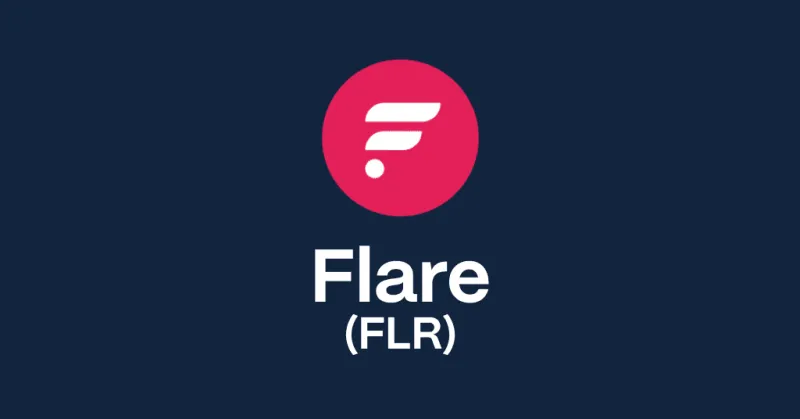Layer 0 blockchains are the underlying infrastructure on which other blockchain technologies and applications are built. They provide a foundation for decentralized, trustless systems that operate without a central authority.
Layer 0 blockchains are responsible for maintaining consensus mechanisms, managing transactions, and ensuring network security. They also offer peer-to-peer networking, address generation, and transaction signing features. Layer 0 blockchains typically have their own native cryptocurrency, incentivizing network participants and facilitating transactions.
One of the key advantages of Layer 0 blockchains is their ability to enable secure, decentralized systems resistant to censorship and manipulation. This makes them useful for various decentralized applications (dApps).
DApps are computer applications that run on a decentralized network, such as a blockchain. Thanks to their more secure, transparent, and efficient approach to interacting with the digital world, they are becoming increasingly popular.
DApps are important because they offer several benefits over traditional centralized applications, including greater transparency, immutability, and security. They are also censorship-resistant. This means they cannot be controlled or shut down by any single entity or government.
Decentralized applications can serve various purposes. These include financial services, identity management, supply chain management, and social networking. They can be built on Layer 0 blockchain networks like Venom, Polkadot, and Cosmos. These blockchains differ in design and implementation. However, they share the common characteristic of being the base layer on which other blockchain applications can be built.
The native token of the Cosmos network is called ATOM. Tendermint, the Cosmos network’s consensus algorithm, is also Byzantine Fault Tolerant (BFT). This means that it can withstand malicious attacks and maintain network consensus even if some nodes in the network are compromised. Some of the key use cases for Cosmos include decentralized finance (DeFi), gaming, and supply chain management, among others.
On the other hand, Venom network uses the Threaded Virtual Machine to execute smart contracts, and its native token is VENOM. It also adopts a Byzantine Fault Tolerant consensus protocol. Some use cases for Venom include DeFi, CBDCs, stablecoins, gaming, and supply chain management.
Polkadot is a heterogeneous multi-chain platform that allows for interoperability between different blockchains. It uses a unique sharding technology called parachains to achieve high scalability and has a native token, DOT.
Understanding Venom Blockchain
Venom Blockchain is a decentralized blockchain network that provides fast, secure, and scalable solutions for various use cases.
Architecture and Features of Venom Blockchain
Venom Blockchain is built using a unique asynchronous architecture that allows for high performance and scalability. Due to its asynchronous design, the network can process up to 100,000 to 1 million transactions per second.
Venom uses a dynamic sharding protocol that enables it to scale efficiently as the number of transactions increases. The dynamic sharding protocol allows Venom to dynamically engage and disengage shardchains, which are individual chains that process transactions in parallel. In addition, Venom Blockchain uses a Turing Complete Virtual Machine known as a Threaded Virtual Machine (TVM) for the execution of smart contracts.
The network employs the Proof-of-Stake (PoS) model as its consensus mechanism. Venom's PoS consensus protocol enables users to validate transactions by staking their tokens as collateral. This mechanism is energy-efficient and incentivizes network security. Venom Blockchain is also Byzantine Fault Tolerant (BFT).
The asynchronous architecture comprises four major components: The Masterchain, Basechain, Workchain, and Shardchains. Each component has its unique purpose and design. Venom blockchain is highly decentralized through its network of validator nodes responsible for processing and validating transactions on the network. Furthermore, the network enables interoperability through its cross-chain communication protocol.
DApps built on Venom Blockchain
There are plenty of already-built dApps within the Venom Ecosystem. These include:
-
Venom Wallet: a secure, non-custodial wallet for storing, sending, and receiving VENOM and other digital assets with an easy-to-use interface.
-
Venom Scan: an explorer for tracking transactions and monitoring transfer status on the network with real-time data on key metrics.
-
Venom Bridge: a cross-chain platform for seamless asset transfer between blockchain networks, supporting all cross-chain data transfers.
-
Web3World: a decentralized exchange for trading digital assets without intermediaries.
-
NFT Marketplace: a platform for buying, selling, and trading NFTs on the Venom blockchain.
Advantages of Venom Blockchain
-
Security: Venom Blockchain is secure and uses an advanced BFT consensus mechanism.
-
Decentralization: Venom Blockchain is not controlled by any single entity, making it less susceptible to censorship and control by any centralized authority.
-
Scalability: Venom Blockchain has high throughput and can handle a large number of transactions per second. This makes it suitable for high-volume use cases.
-
Interoperability: The network is interoperable through its cross-chain communication protocol, enabling seamless asset transfers between different blockchain networks.
-
Rewards: Users can earn rewards by participating in the network through staking and other activities, incentivizing network participation and growth.
-
Ultra-fast transaction finality: Potential time to finality of 0.2 – 0.3 seconds.
Disadvantages of Venom Blockchain
-
Little existing brand loyalty or previous marketing efforts
-
Non-EVM compatibility means that EVM-compatible dApps can’t interact easily with the chain.
-
No history of earlier bull runs
-
Venom is a relatively new protocol, meaning it has limited adoption compared to other more established blockchains such as Ethereum and Polkadot. This can make finding developers and businesses to build on the platform harder, limiting potential use cases.
Understanding Cosmos Blockchain
Cosmos is a decentralized blockchain ecosystem that enables independent blockchains to communicate. The blockchain has been designed to address some of the fundamental problems plaguing the industry for a long time, such as scalability, interoperability, and customizability. Let’s take a closer look at the architecture of the Cosmos blockchain, its key features, the dApps built on it, and its advantages and disadvantages.
Architecture and Features of Cosmos Blockchain
The Cosmos ecosystem comprises two primary components: Tendermint Core and the Cosmos SDK. Tendermint Core is a Byzantine Fault Tolerant (BFT) protocol that ensures consensus across the network. Cosmos SDK is a framework that enables developers to build customized applications on top of the Cosmos blockchain.
The Cosmos Hub serves as the primary chain in the Cosmos network, connecting various independent blockchains called zones. Zones are designed to be interoperable, meaning they can communicate and transact with each other via the Cosmos Hub.
Cosmos offers several key features that distinguish it from other blockchain ecosystems. The Cosmos blockchain is interoperable. This feature enables independent blockchains to communicate via the Cosmos Hub. Furthermore, it could reduce transaction costs and increase efficiency.
Cosmos uses a Proof-of-Stake (PoS) consensus algorithm. This is more energy-efficient and scalable than the Proof-of-Work (PoW) algorithm used by many other blockchains. PoS allows validators to stake tokens to validate transactions and earn rewards, reducing the need for high computational power.
In addition, developers can use the Cosmos SDK to build customized blockchains and applications that meet their specific needs. This feature makes Cosmos an ideal platform for developing blockchain-based solutions for various industries.
Finally, the network’s Tendermint Core provides fast finality, meaning that transactions are confirmed quickly and cannot be reversed. This feature is essential for businesses and individuals who require certainty and security when making transactions.
DApps Built on Cosmos Blockchain
The Cosmos ecosystem has grown significantly, with many dApps built on it. Gravity DEX and Osmosis are two decentralized exchanges (DEXs) built with the Cosmos SDK. These exchanges allow users to trade cryptocurrencies in a decentralized and secure manner.
At the same time, Kava and Akash Network are two popular DeFi applications built on Cosmos. Kava is a cross-chain lending platform that allows users to borrow and lend digital assets across multiple blockchains. Akash Network, on the other hand, is a decentralized cloud computing platform that enables developers to deploy and run decentralized applications.
Other notable dApps built on Cosmos include Juno Network, Regen Network, and Agoric. Juno Network is a blockchain that aims to provide a more scalable and efficient infrastructure for decentralized applications. Regen Network focuses on sustainable agriculture and environmental conservation. Lastly, Agoric is a smart contract platform that allows developers to build and run secure smart contracts using JavaScript.
Advantages of Cosmos Blockchain
-
Cosmos’ interoperability allows independent blockchains to communicate with one another, reducing transaction costs and increasing efficiency.
-
Cosmos delivers a scalable blockchain solution. It uses a PoS consensus algorithm, which is more energy-efficient and scalable than PoW, making it more accessible to a broader range of users. Scalability enables easy expansion of the network by adding more zones.
-
Developers can build customized blockchains and applications using the Cosmos SDK, making it an ideal platform for developing solutions for various industries.
-
Sovereignty allows each zone to have its own governance and token economy.
-
Fast transaction finality allows for quick and secure transactions.
Disadvantages of Cosmos Blockchain
-
The Cosmos ecosystem is relatively complex and may take some time for developers and users to understand fully.
-
Some critics argue that the Cosmos ecosystem is too centralized, as the Cosmos Hub plays a central role in the network.
-
While Cosmos uses a PoS consensus algorithm, it is still susceptible to attacks like any other blockchain, making it essential to maintain high levels of security.
Understanding Polkadot Blockchain
Polkadot is a next-generation, sharded blockchain protocol that aims to provide a scalable, interoperable, and secure network for decentralized applications (dApps).
Architecture and Features of Polkadot Blockchain
The architecture of Polkadot consists of four main components: the Relay Chain, Parachains, Bridges, and the Polkadot Runtime Environment (PRE). The Relay Chain is the main chain that serves as the network's backbone and provides shared security for all the other chains.
Parachains are independent chains that can be customized for specific use cases and connect to the Relay Chain via a slot auction process. Bridges are connectors that allow external blockchains to communicate with Polkadot, enabling cross-chain interoperability. The PRE is a set of tools and libraries that developers can use to build their customized parachains and dApps on the network.
Polkadot offers several key features that set it apart from other blockchain platforms. For starters, it allows for interoperability between different blockchains, meaning that chains can communicate and exchange data and assets.
It also uses a scalable sharding architecture that enables it to handle a large number of transactions per second. Polkadot offers shared security across all parachains, which means that all the chains on the network benefit from the security of the main Relay Chain. Finally, it provides a flexible governance system that allows stakeholders to vote on proposals and upgrades to the network.
DApps built on Polkadot Blockchain
Several dApps have been built on Polkadot, including:
Acala: This is a decentralized finance platform offering stablecoin lending, and borrowing services.
ChainX: This blockchain platform allows users to trade different cryptocurrencies across different chains.
Kusama: Kusama is a scalable, multi-chain network that allows developers to test and deploy new blockchain technologies.
Advantages of Polkadot Blockchain
-
Polkadot uses a sharding technology to divide the network into multiple parallel chains, which can process transactions simultaneously. This increases the throughput of the network and improves its scalability.
-
Polkadot enables cross-chain communication between different blockchain networks, allowing developers to create dApps that can interact with other blockchain networks. This interoperability feature makes Polkadot a valuable platform for developers who want to build complex blockchain applications.
-
Polkadot uses the nominated Proof-of-Stake (NPoS) consensus algorithm inspired by the Ouroboros protocol to provide a high level of security. The network also has a sophisticated governance system that enables stakeholders to make decisions about the network's future development.
-
Polkadot is designed to be flexible and adaptable, supporting a wide range of use cases. The network's modular architecture allows developers to create customized parachains (parallel chains) with specific features and functionality.
Disadvantages of Polkadot Blockchain
-
The Polkadot network is relatively complex and may be difficult for new developers to understand. The protocol has a steep learning curve, and developers must have a good understanding of blockchain technology to build applications on the network.
-
Polkadot's governance system may be susceptible to centralization, as a small number of large stakeholders could significantly influence the direction of the network. However, the network has implemented measures to prevent centralization, such as a mechanism to limit the voting power of large stakeholders.
Comparative Study of Venom and Cosmos Blockchain
|
Criteria |
Venom |
Cosmos |
Polkadot |
|
Consensus engine |
Asynchronous network - “Byzantine Fault-Tolerant” consensus mechanism |
Tendermint Core - Byzantine-Fault Tolerant |
Nominated Proof-of-Stake consensus algorithm inspired by the Ouroboros protocol |
|
Hosted blockchain |
Layer-0 masterchain |
The Cosmos Hub |
Relay Chain |
|
Workchains |
Layer-1 multiple workchains |
Cosmos SDK 0 Custom blockchains |
Custom Independent Parachains |
|
Sharding |
Dynamic sharding |
Sharding using zones |
State transition function (STF) model |
|
Licensed |
Licensed by ADGM |
Not licensed by any regulatory bodies. |
Not licensed by any regulatory bodies. |
|
Interoperability |
Connects digital assets across networks with workchains - cross-chain communications |
Inter-blockchain communication protocol (IBC) |
Polkadot Bridges |
|
Customizability |
Custom emission schemes, commissions, and blockchains with Workchains |
Cosmos SDK for creating custom blockchains |
Substrate development framework |
|
dApps |
Venom has fewer dApps than its competitors because it is still in the early stages of ecosystem development. Some of these dApps include: Venom Wallet, Venom Scanner, Venom Pools, Venom Bridge, Web3World, NFT Marketplace. |
Cosmos currently includes more dApps as it is a more established blockchain. Some of these include: Affondra, Agoric, Althea, Anchor Protocol, Antlia, Astro Canvas, Archway, and many more. |
Polkadot currently includes more dApps as it is a more established blockchain. Some of these include: Moonbeam, Acala, Parallel, Astar, Moonriver, Karura, Interlay, Bifrost, and many more. |
|
Governance |
Voting and decision-making governance mechanism |
Voting and decision-making governance mechanism |
Voting and decision-making governance mechanism |
|
Staking |
Staking for network security and validation. |
Staking for network security and validation. |
Staking for network security, and validation. |
The Future of Decentralized Applications on Layer 0 Blockchains
Decentralized applications (dApps) are becoming increasingly popular as blockchain technology matures. Layer 0 blockchains such as Venom, Polkadot, and Cosmos are designed to provide high scalability, interoperability, and security, making them ideal for hosting a wide range of dApps.
DApps on these Layer 0 blockchains can find use cases in DeFi, gaming, supply chain management, social network, etc. Also, the adoption of DApps on Layer 0 blockchains is growing rapidly.
According to DefiLlama, the total value locked in DeFi dApps on Polkadot and Cosmos is over $20 million. As the benefits of decentralized applications become more widely recognized, we will likely see even more adoption of dApps on Layer 0 blockchains in the future.
Yet, building on Layer 0 blockchains presents significant challenges alongside their exciting prospects. One of the main challenges facing Layer 0 blockchains is achieving widespread adoption and usage by developers and users alike.
Another challenge is ensuring the security and reliability of these networks, which may require ongoing updates and improvements to the underlying infrastructure. However, Layer 0 blockchains also offer opportunities for innovation in the blockchain space and the potential to create new business models and applications that were previously impossible.
Conclusion
Cosmos, Polkadot, and Venom are Layer 0 blockchain platforms designed to facilitate the development of decentralized applications.
Cosmos aims to create an internet of blockchains, allowing interoperability between different blockchains, while Polkadot focuses on interoperability and scalability through its unique sharding technology. At the same time, Venom offers a secure environment for building dApps with its Byzantine Fault Tolerant Consensus protocol.
Ultimately, the choice between these platforms will depend on the specific needs and goals of the project or application in question. When selecting a blockchain platform, developers must consider several factors. These include ease of use, security, scalability, interoperability, and community support.
Overall, the rise of Layer 0 blockchains such as Cosmos, Polkadot, and Venom represents a significant development in the broader blockchain ecosystem. These platforms offer exciting new possibilities for the development of decentralized applications. Plus, they will undoubtedly play a significant role in shaping the future of blockchain technology.

 Nikolas Sargeant
Nikolas Sargeant







